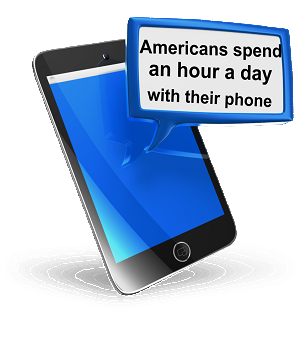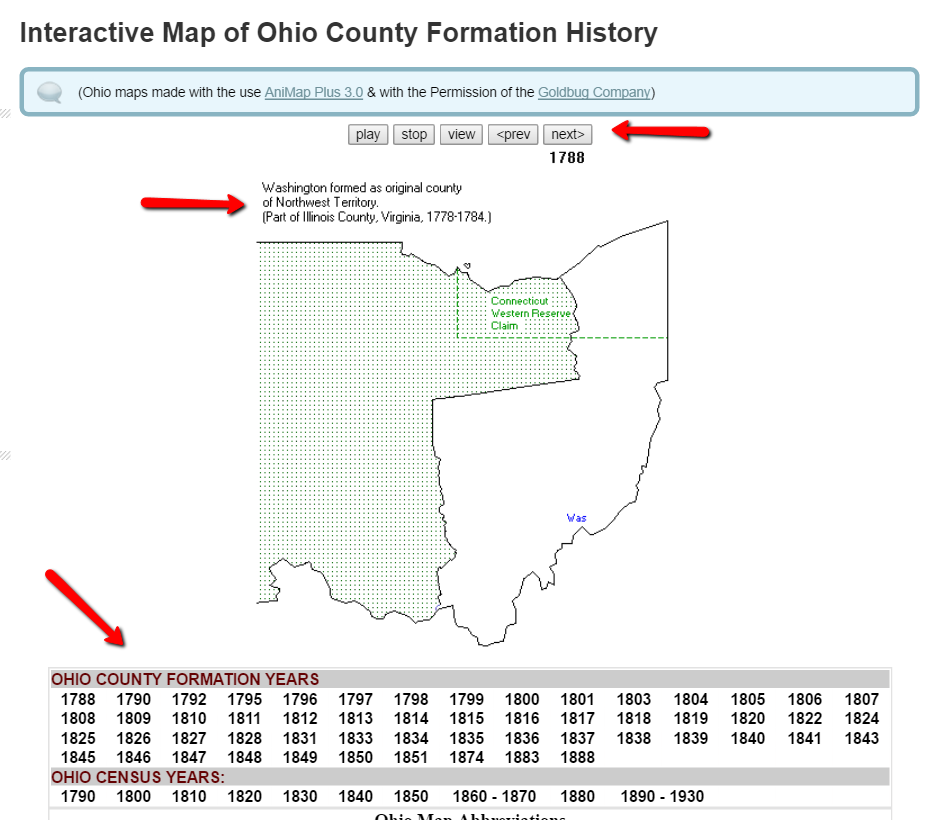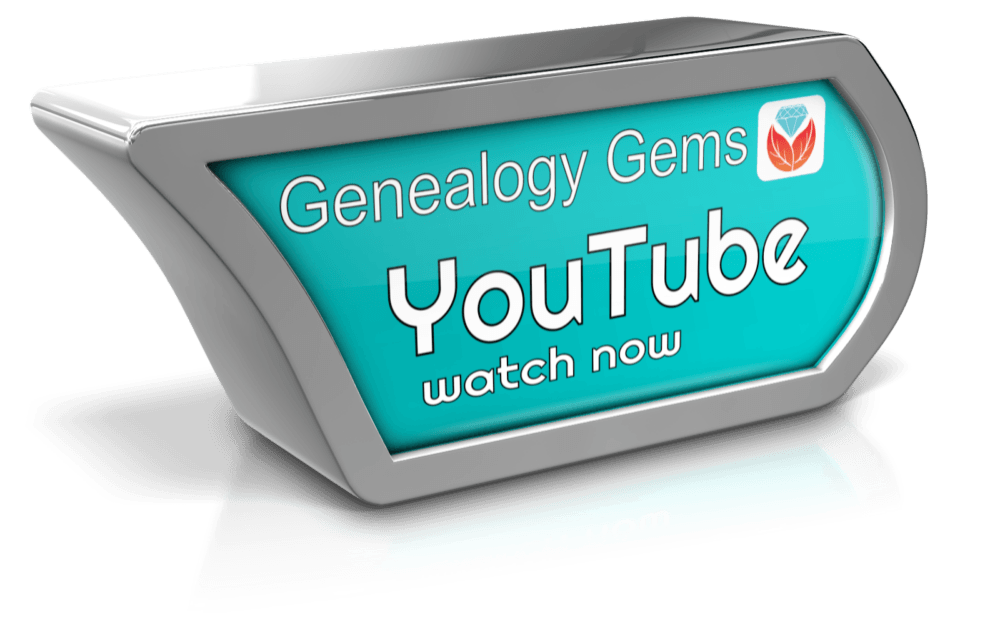What the U.S. Federal Government Could Learn from Genealogists
Beware: Personal Opinions are coming your way in this article!
In my book The Genealogist’s Google Toolbox I emphasize how to use Google to determine what is already available and free online before investing your limited time and money in offline family history searching. Smart genealogists allocate their resources wisely, getting the most bang for their buck. And collaboration between individual genealogists allows us to accomplish even more.
 It looks like the U.S. Federal Government could learn a thing or two from savvy genealogists. The Washington Times is reporting that Congress’s auditor has discovered that our tax payer money given to the federal government isn’t being spent very wisely. (Imagine that!) Agencies fail to collaborate and share information, creating redundancy and overspending.
It looks like the U.S. Federal Government could learn a thing or two from savvy genealogists. The Washington Times is reporting that Congress’s auditor has discovered that our tax payer money given to the federal government isn’t being spent very wisely. (Imagine that!) Agencies fail to collaborate and share information, creating redundancy and overspending.
One example from the article: the Commerce Department “has been charging other government agencies millions of dollars for reports that the other agencies could just as easily have gotten online, for free – often with a Google search.”
This news makes it even harder to swallow the news that the National Archives and Records Administration (NARA) is suffering reduced hours of service due to budgetary issues.
The Bottom Line:
Google Twice, Pay Once (and only if you have to!)
What To Do When Technological Changes Get You Down
Feeling frustrated by changing technology? Here’s a look back at a post I originally wrote in 2013 that addresses the mayhem tech changes can cause, and how a visit to a fast food restaurant changed my perspective on a particularly rough day.
The “Mayhem” commercials from Allstate are a riot, but of course all that mayhem isn’t all that funny when it’s happening to you.
Allstate Raccoon Mayhem Commercial
Sometimes it feels like technology companies are having a little mayhem fun with us when they get us up and running with their software program, or app, or phone, or tablet, or whatever, and then *BAM* they change it all up. Mayhem!
It’s not really that we don’t want new technology, it’s just that:
1. We sometimes get very little if any warning that it’s coming
2. The change requires investing time in learning all new ways to do something.
3. The change seems to be suspiciously benefiting the changer and not us – the “changee.”
4. We have to shift out of auto pilot into manual drive
…which means it takes longer to do tasks, and we tend to make mistakes more often because our brain, our eyes, and our fingers are all trained to quickly complete the task the old way.
I’m usually pretty excited about new technology and I love seeing what it can do for our genealogy efforts, but don’t think that I don’t have my moments when I just want to run screaming into the street and chuck my laptop in the gutter. We all have our moments. And I’m here to tell you that I feel your pain and have suffered myself, some mayhem this week, in fact, I call it:
Mobile Mayhem
See, the thing is, folks love their smart phones. Walt Mossberg, principal technology columnist for The Wall Street Journal just tweeted that according to an Experian marketing survey the average America spends an hour a day with his or her smartphone. And iPhone users spend more time than Android users.
 Google, and specifically YouTube which they own, has definitely taken notice of all this smart phone savvy-ness, and they’ve decided to turn my world, and all the other YouTube Channel publisher’s worlds out there upside down.
Google, and specifically YouTube which they own, has definitely taken notice of all this smart phone savvy-ness, and they’ve decided to turn my world, and all the other YouTube Channel publisher’s worlds out there upside down.
I launched my YouTube channel way back in the stone-age, 2007, before Google even owned YouTube. And I have over 60 videos on the channel, and we’ve been diligently working on getting prepared for a while new phase of video production here at Genealogy Gems. So I have had my hands quite full on the video front.
YouTube has implemented a total redesign of YouTube channel pages. The goal is to make the channels mobile friendly, while still accommodating the wide range of full size computer screens that are out there. But in order to accomplish this, we as channel publishers have to scramble and get new artwork for our banner, produce a new introduction video and rearrange the video layout.
So how did I respond to this change you ask?
I ignored it, of course, until I had about a week left before they were set to flip the switch. And then this week all of a sudden it was an emergency to get my channel ready.
So I finally broke down and hired someone to create the new artwork, then I spent hours one morning trying to get all the changes made. My frustration level was growing a little because I just wasn’t happy with how the design of the new artwork was fitting the new layout. And there were so many other things I wanted and needed to be doing that week.
Then my sweet neighbor came to the door and my dogs, who think every knock on the door is a masked marauder, went totally ballistic, blasting through the room knocking over my morning coffee on their way to the door. So now I had coffee all over the carpet.
After my neighbor left I got the portable steam cleaner out to clean up the coffee stained carpet and it worked for a total of 45 seconds, then dribbled to nothing. So I went to the kitchen and set it on the counter to look at it and when I took the nozzle off it dribbled dirty water all over my freshly cleaned kitchen floor.
I spent the next two hours cleaning the kitchen floor, fixing the steam cleaner nozzle, and cleaning my carpet. And my YouTube channel was still not quite right, and I wasn’t sure how to fix it. Panic started to set in. All of a sudden I feared I would never figure it out, or get it done, and on top of that I was getting further behind on everything else I needed to do.
When my husband got home we went out for fast food because I hadn’t had a chance to do a thing about preparing dinner. So he listened to my day as we go through the line, and then I went to get my soda and I set my tray on the counter by the soda machine. Unfortunately I didn’t notice that the counter top was about six inches shorter than the tray, and my tray of shanghai beef and cream cheese won tons unceremoniously hit the floor.
At this point I was feeling pretty sorry for myself and pretty sure it was all YouTube’s fault.
Then, a woman my age came into the restaurant with her daughter and husband. She sat and waited while they ordered the food because she was in a wheel chair. And needless to say my perspective made a big course correction.
Maybe I don’t really know what frustration can be. And…get ready for it…maybe I over-reacted all day long.
She smiled at me and I smiled back and then I got to thinking back on my day. And I realized it’s so often not the change itself that causes the mayhem, but it’s our knee jerk response of fear to it.
If you have ever found yourself gritting your teeth as the next big technological roll out happens, or sometimes worse yet, the closing of a favorite tool like iGoogle or the Google News Timeline, here are some things to keep in mind:
First: Stay Calm and Carry On
Just like the famous saying from World War II Britain, we are much more effective in difficult times when we take a breath and stay calm, and then we continue moving forward to the best of our ability at our pace.
Often times it’s our lack of calm that causes us not carry on as usual, and in the end, brings more trouble down on our own heads.
The older I get the more I can see how human beings bring a lot of stuff on themselves. I didn’t start picking away at the new artwork and design until the last week before the change implementation because I was focusing on how they shouldn’t be changing it. And yea, that kind of thinking wasn’t hurting anyone but myself, because YouTube wasn’t about to call a halt to it because some channels didn’t like the idea.
And simple things, like I knew better than to set my coffee where I did, but I was so freaked out about the YouTube design I carelessly set it at dog level. And it was just silly to pull the nozzle off the steam cleaner over a clean floor rather than over the sink.
Second: The Technology Folks Probably Have a Good Reason for the Change
Sometimes it’s a financially driven change; they just can’t make it sustainable as is. And I would much rather see an inconvenient change than a complete disappearance of a Google or an Ancestry.
And sometimes it’s because the technology folks do have their eye on the future, and they see the big picture of how you and other users use your technology today. In the end the change will meet a pressing need, and they are striving to stay ahead of the game so we aren’t moaning down the road. YouTube’s change is a great example of that. They’ve made the case that a large percentage of users watch video from mobile devices and they challenged us as channel publishers to check our own analytics. And you know what, they’re right! I wasn’t keeping an eye on that but YouTube was.
Third: A Little Investment in Education can Go a Long Way
It’s OK if you have to slow down for a little while and spend some time getting re-educated. I decided to sign up for an online class YouTube offered channel publishers and in the first hour or so I came to better understand how my channel was going to benefit. And understanding the benefits will give you the motivation to take on the change.
I know, it’s hard to imagine that you can find even more time on education. But as I’ve said before on my Genealogy Gems Podcast, I think as genealogists we need to actually be budgeting a certain amount of time for education. Don’t leave it to be squeezed in in a panic. Allocate 10% of your research time for reading and education, and another 10% on staying organized, and I guarantee you remaining 80% will be much more productive!
The truth is, if my YouTube channel doesn’t look perfect yet, I trust that you guys will still be watching, and it certainly won’t stop me from publishing new videos.
And it’s sort of funny that this has been on my mind so much this week and I’ve been personally facing the YouTube change here at Genealogy Gems, because I just had the opportunity to sit in on a conference call with Ancestry.com where they provided a behind the scenes look at some of the changes they are working on for the upcoming months. Listen to Genealogy Gems Podcast episode 156 to hear the details.
After all I struggled with and all I learned from it last week, I found myself being much more open to the Ancestry changes. I was more focused on spotting the benefits to the genealogist, and I found myself admiring their commitment to continuous improvement. See the thing is, whether you are an individual genealogist or a big company like Ancestry, if you aren’t striving for continuous improvement you will fall behind, and the work will become more difficult because you are working harder than you have to.
Illuminating Time-Lapse Videos Show Our Changing World

Time-lapse videos first intrigued me as a child when I watched a little seed grow into a beautiful flower in a matter of seconds. Now, illuminating time-lapse videos and tools are helping genealogists visualize our changing world.
Last month, animator Max Galka published a time-lapse map of the history of urbanization over nearly 6,000 years in just three minutes.
Mr. Galka mentions on his blog that tracking urbanization occuring before the mid-20th century was a difficult task – until recently. A team of Yale researchers published a collection of urban population data dating back to ancient times which helped Galka create his video. Their collection was quoted to be a “clean, accessible dataset of cities, their locations, and their populations over time.”
I was surprised how quickly things changed and found it amazing still how many places in the world are yet to be “urbanized.”
Time-lapse Video Covering Immigration to the U.S. Since 1820
Again, Max Galka presented an amazing animation of immigration to the United States. This creation shows the countries that sent the most people to the U.S. since 1820.
The U.S. is a nation of immigrants, says Galka. As each dot flies across the page, it represents 10,000 people who immigrated to the U.S. In the bottom left corner, Mr. Galka lists the three top countries where immigrants are coming from at any given time. I was stunned as the map lit up in Russia and Africa only fairly recently. It is clearly shown that the U.S. is indeed a nation of immigrants in this colorful time-lapse video.
Time-lapse Tools for Genealogy
As a genealogist, I am constantly in search of county records. So many times, county lines or boundaries changed. I even have one family that lived on the same farm, but technically resided in three different counties over a period of about 50 years. We can’t possibly know when each county of any given state was formed or created, until now that is.
One of my favorite tools for discovering county changes over time is the Map of US.org website. You can find a map of each of the 50 states and run the interactive formation sequence. For example, I can find the Ohio map.

The Ohio map begins in 1788. It indicates the one county in the Northwest Territory (today’s Ohio) at that time. Washington County was formed as the original county of the Northwest Territory and was created from part of Illinois County, Virginia. That’s another reason I love these interactive maps. With the creation of each county, the map indicates from which parent county or counties it was formed. This is a great help for genealogy research. When I can’t find my targeted ancestor in the county I thought they should be in, I can determine when the county was formed and from what parent county or counties it was formed from. Then, I can quickly determine the other locations that may have records I need.
In addition to the interactive time-lapse maps, each state has a list of other helpful maps that may be of interest to you. For example, the map links for Oregon include the Historical Maps of Oregon, a set of beautiful old maps that can be viewed or downloaded.
Maps can give us a bigger picture of our county, our state, our country, and even the world. These tools help us picture our ever-changing world. What impacted you the most while watching these videos? We would love to hear from you in the comments below!
If you feel inspired to learn more about map visualization, you will enjoy Lisa’s Google Earth video. Lisa was an early pioneer of genealogical data visualization and has been teaching genealogists how to use the free software for the last several years. You can watch the free Google Earth for Genealogy video here or check out her revised and updated e-book, The Genealogist’s Google Toolbox 2nd Edition to learn even more tips and tricks for Google genealogy research.
More Gems on Videos for Genealogists
Genealogy Tech Tips with Lisa Louise Cooke
How to Create Captivating Family History Videos
Lisa Louise Cooke’s Genealogy Gems YouTube Channel
4 Great Local History Apps for Genealogists
In Lisa Louise Cooke’s new video interview with Amy Crow, Amy shares 4 of her favorite free local history apps and websites for genealogists.
At RootsTech 2016, Lisa Louise Cooke chatted with Amy Johnson Crow about Amy’s class, “Best Websites and Apps for Finding Local History.” In the video below, Amy shares four of her favorite (and FREE) local history apps and websites, along with tips for using them. Click the video player below to watch, and then below the video, see a summary with links to those sites.
When searching the following FREE local history apps and sites, Amy recommends searching for a place rather than an ancestor’s name.
History Pin. This website is like Pinterest for history, says Amy. It’s especially strong for local history in England, Ireland, Scotland, but also wonderful for the U.S. A lot of organizations have added photos and curated them into collections, like Pinterest boards.
Instagram. It’s not just for the kids and pictures of your food! Follow libraries, archives and historical societies that are in towns where your ancestors lived. They may post historic photos from their collections. Instagram now has a feature where you can share photos with those you follow on Instagram. Use it to share a cool old picture that relates to your family history with a young relative.
The Clio. This website and local history app (available buy malaria medication online through Google Play and on iTunes for iPhone/iPad) shows you historic sites around you when you turn on your location services. The resources, descriptions and bibliographic entries on this site are great to follow up with for your research.
What Was There. At this site (or with the iPhone app) you can view historic photos plotted on a map near your current location. Use it to look around and ask the question, “What happened here?” if you’re on a walk or visiting somewhere. The site is integrated with Google Street View. You can also upload your own old photos if you know where they were taken and do an overlay in Google Maps, in much the same way Lisa teaches about doing in Google Earth.
“We focus so much on the people, and we search for names. I really believe that if we have any hope of understanding the ancestors, we have to understand where they lived…what was impacting their lives.” -Amy Johnson Crow
Looking for more mobile genealogy tips? Turn to Lisa Louise Cooke’s brand new book, Mobile Genealogy: How to Use Your Tablet and Smartphone for Family History Research. In addition to apps specifically for genealogy, you’ll also find recommendations for free and inexpensive apps for all those related tasks: note-taking, recording interviews, taking pictures, reading, collaborating, traveling, learning and sharing genealogy with loved ones.
